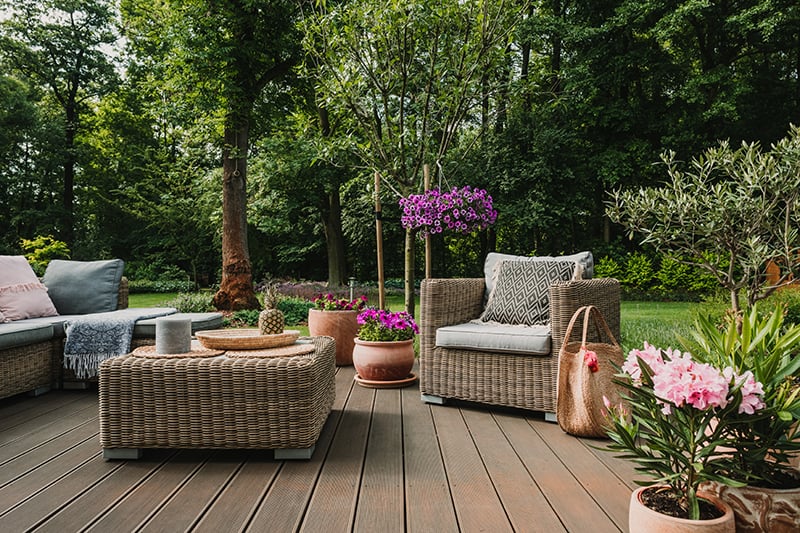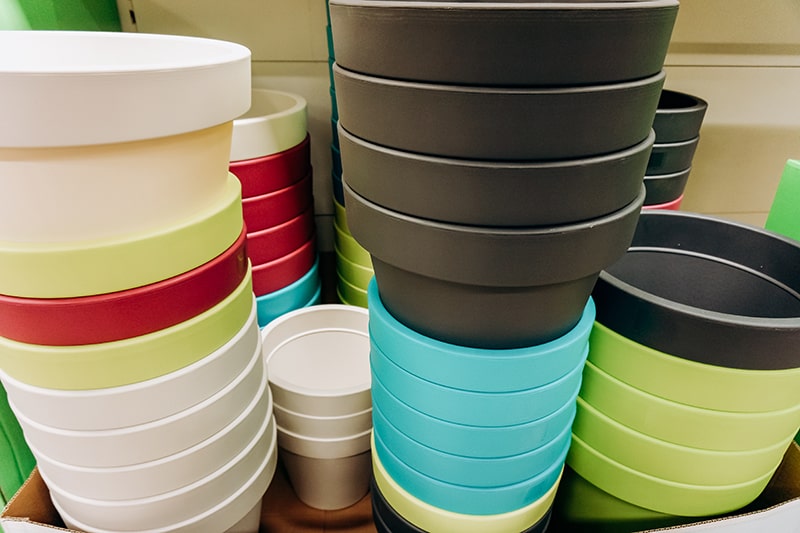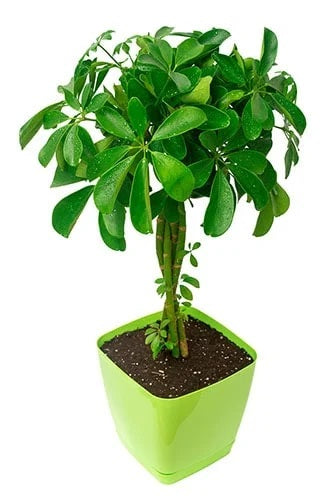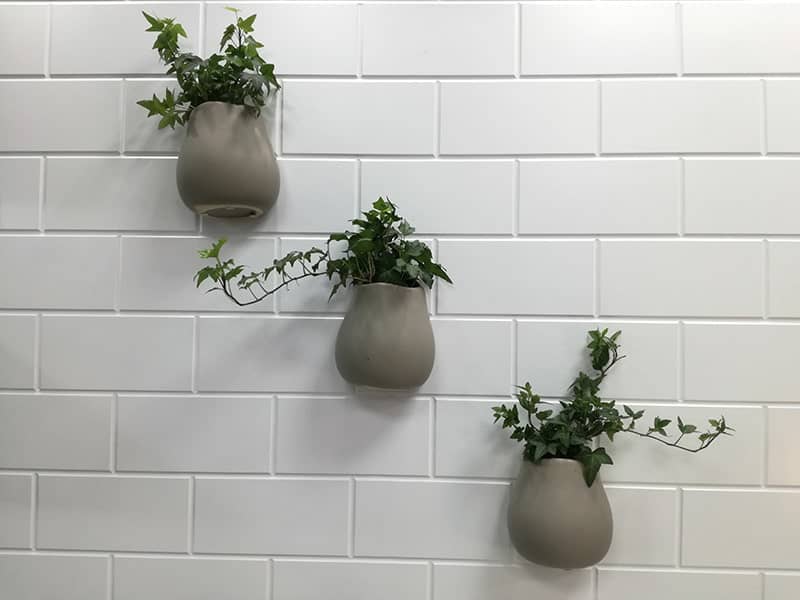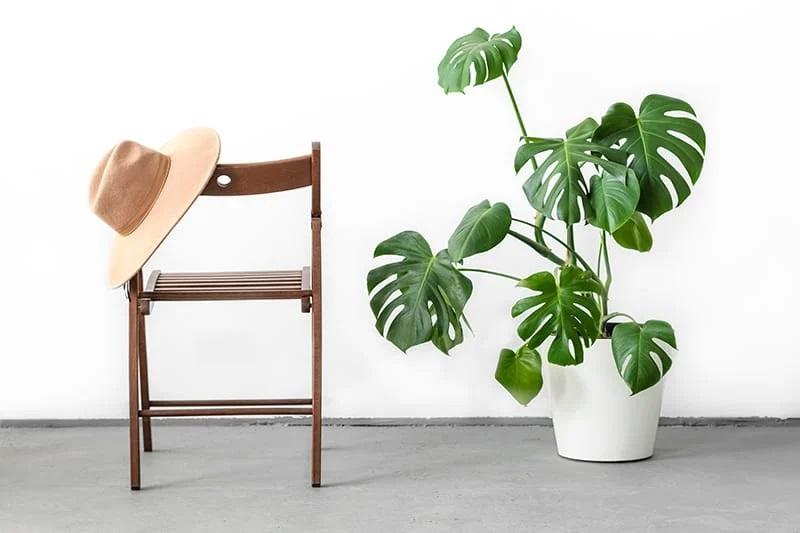When it comes to gardening, your plants are only as healthy as the ground ... Read More
- Home >
- Growing Trees in Pots – Benefits, Tips & Tricks
Growing Trees in Pots – Benefits, Tips & Tricks
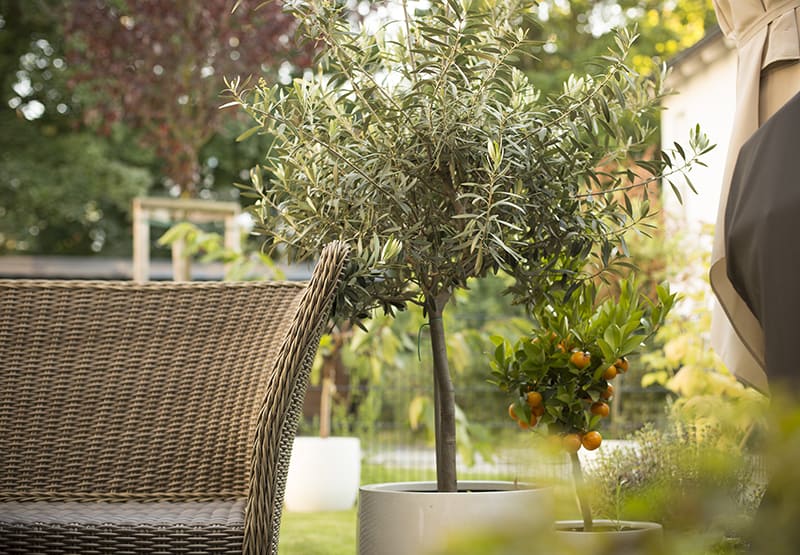
There are many reasons you might choose to grow a tree in a pot.
But whatever your motivation, you’ll want to note these considerations to ensure your pot-grown tree has a long and healthy life.
Benefits of Growing Trees in Pots
People grow trees in containers for several reasons, and though some trees fare better when planted in the ground, there are many trees that thrive when grown in containers. Some of the reasons you might want to consider growing a tree in a pot are:
Adjust Lighting and Shelter
One problem with planting a tree directly in the ground is that it is fairly permanent. Once the roots have settled in, you probably won’t want to dig it up again and risk causing harm to the plant and its root system, as a move like this can be fatal for many trees or just simply not possible once they have reached a certain size.
In many instances, this won’t be a problem, but if you find months later that your chosen position for your tree does not receive the ideal amount of light, then this can be an issue. Instead, if a tree is growing in a pot, you can move it with relative ease to ensure it is getting the perfect light. You may want to move it around your garden each season, adjusting it to the light exposure according to the time of year.
By ensuring your plant always has adequate light, you will be helping it to thrive. You can also move delicate trees to a more sheltered position if they aren’t faring well in harsh winds and storms.
Move with You
If you move house, then you might be reluctant to have to leave your beloved trees at your former home, which you have tended to and cared for many years. If you grow your trees in pots, then the obvious advantage to this is that you can take them with you wherever you go, which will be especially appealing if you are someone who moves home frequently.
Winter Indoors
Growing trees in pots will also allow you to be able to grow things that wouldn’t normally survive in your climate zone because they can be moved indoors when the temperatures drop. For example, trees that would not survive through frost, such as citrus trees, can be grown in a pot and kept in the garden through spring and summer, then moved into the house or garage through fall and winter.
Decorate Patio or Deck
Growing trees in pots is a great way to bring your garden closer to you. Typically trees are grown along back borders in gardens, but when grown in pots, they can be brought onto your patio or deck where they can be enjoyed. This is especially nice if you’re growing scented trees, as you will be able to appreciate their aroma much more so than if they were growing in the distance. Keeping your trees in pots also allows you to bring life and greenery onto your patio or deck, where there is no ground soil for plants to be grown in the ground. Trees in containers can make these areas look much more appealing and alive.
Maintain Size
One reason you may choose to grow a tree in a pot is to maintain its small stature. When trees are grown in the ground, they have unlimited opportunities to spread their roots, and in doing so, they are able to grow taller. By restricting a tree’s root growth in a pot, you can restrict its size and make sure it doesn’t get too big for the space.
Limited Space
Container-grown trees are ideal for keeping in areas where you have restricted space, for example, on a balcony or in a courtyard garden. Having minimal space does not mean that you have to miss out on the joy of growing trees if you select one that can be grown in a pot for its entire lifespan.
Trees as Houseplants
You can also grow trees in pots and keep them indoors all year round as houseplants. This will enable you to be able to grow tropical trees, such as the weeping fig tree, which would otherwise only survive in hot outdoor climates. Tropical trees grown in pots make excellent houseplants because they enjoy the consistently warm temperatures that homes offer, and they bring plenty to the table, including air purification and interior decor.
Tree Selection
When choosing a tree to be pot-grown, you’ll need to do your research. Some trees adapt better to life in a container than others, and for some trees, the limited space offered for their roots in a pot simply won’t suffice. You’ll also want to look for a slow-growing tree that won’t quickly outgrow its pot; otherwise, you’ll find yourself having to repot too frequently.
Choose a tree that doesn’t grow to be very large because this could cause it to become top-heavy and liable to fall over in its pot, and large trees can be very awkward to repot. Dwarf cultivars of trees are a good idea, as these do not need a lot of space to grow well. Some trees that are ideally suited to growing in a container include:
Pot Selection
If you have bought a tree that you want to grow in a container, choose a pot that is around the same size as the pot the tree is currently in. The only exception to this is if the root ball feels tight and congested in its current pot; in that case, you should size up.
Every time the roots grow to fill the pot, you should move the tree to a pot that is two inches larger. This will typically need to be done every two years, depending on how quickly the tree is growing. Choosing the correct size of pot is important as it can affect the health of the tree. A pot that is too small will not offer enough space for roots to grow and spread, which can cause stunted growth. Some trees that are kept rootbound for too long will struggle to thrive and, in some cases, die. Alternatively, a pot that is too big is equally troublesome.
If there is too much soil in a pot compared to the size of the root ball, the roots can become overwhelmed by the amount of moisture, and if they are not able to soak it all up, then the roots may start to rot and kill the plant. Also, pay attention to the material of the container you choose because this can affect how often you’ll need to water the tree.
Terracotta pots absorb water from the soil and dry out more quickly because they are porous, whereas plastic or metal pots will keep the soil moist for longer and therefore not need to be watered as frequently. Ensure the pot has drainage holes at the bottom for excess water or rainfall to escape; this will prevent the roots of the plants from becoming too wet, which can lead to root rot and the demise of the tree.
Winter Protection
Trees grown in pots have less protection against cold temperatures than in-ground trees. The temperature underground tends to be at least a degree warmer than the air in winter, which can make all the difference to a plant’s survival. Roots in a pot have little protection against the cold and can freeze in low temperatures.
To prevent this from happening, you can bring your plant inside during the colder months, or if you’d prefer to keep it outside, you can wrap the pot itself in fleece to insulate it. Add mulch to the top of the soil to create an extra layer of insulation, though leave a few inches gap around the trunk to prevent damage from disease.
Hardening Off
If you are bringing your pot grown trees inside for winter, then you’ll need to help them gradually acclimatize to being back outdoors the following spring; this is referred to as ‘hardening off.’ If your tree goes from being in a warm and cozy low-lit environment in your home, straight back out to the intense light, cooler temperatures, and windy weather outdoors, then it can go into shock.
Many trees that are shocked will respond by shedding all of their foliage, and in some cases, cannot recover. To prevent this and harden off your tree, you can reintroduce it to the outdoors slowly.
Start by moving it outside in a shaded spot for just one or two hours a day for several days in a row. Then gradually move it to a sunnier spot, and increase the hours it spends outside each day over the course of two or three weeks. After this, you can select its position where it can remain outdoors for the remainder of spring and summer.
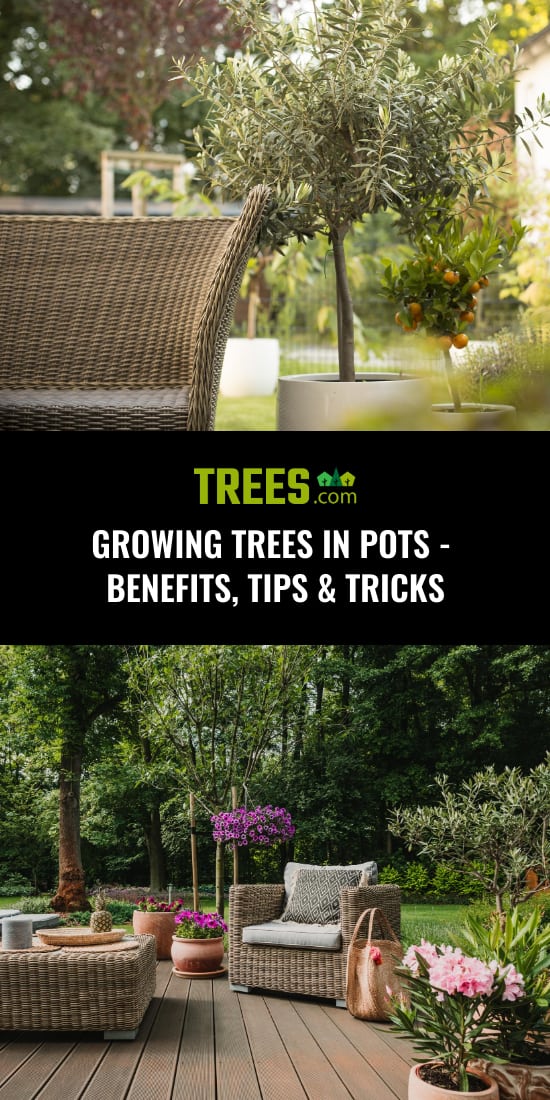
Related Content
-
How to Use Bone Meal Fertilizer in Your Garden
-
Best CFL Grow Lights – Grow Guide & Reviews
CFLs are no doubt among the most popular light types used in the last 20 y... Read More
-
8 Best Bedroom Plants That Purify The Air & Improve Your Sleep Quality
If you’ve been thinking of adding some plants to your sleeping quarters, t... Read More
-
Coconut Coir – What It Is, Varieties, and How to Use It
The growing medium meets soil additive, coconut coir (or coco coir for sho... Read More
